
15) Fort Tilden's Mine Casemate
Updated: September 6, 2001

A contact type mine. Mines used in the NY harbor were tethered to the harbor floor.
Background:
In 1891, an experimental mine field was planted in the Potomac River near Fort Washington, just south of Washington, D.C. The mine control room was casemated and improved in 1899. In 1898, during the Spanish-American War, the U.S. Engineers attempted to develop a minefield for the New York harbor, but the attempt failed due to the poor condition of the equipment and a complete lack of technical knowledge concerning the matter.
This poor situation continued through World War I and the U.S. Army was unable to plant any mines in the defense of the United States. The U.S. Army Mine Planter Service was established within the Coast Artillery Corps in July of 1918.
In 1931, the U.S. Army moved it's development and maintenance work from Fort Totten, NY, to the Submarine Mine Depot at Fort Monroe, VA. In 1939, a reliable controlled submarine mine system had been developed, but the U.S. had fallen far behind the British and Germans in mine technology. In 1941, the Army finally had the material, adequate facilities, and trained personnel in position at the local mine depots along America's coasts.
On December 7, 1941, the U.S. Army had approximately 5,000 moored, controlled mines in stock and 1,200 mines in defensive minefield projects had already been planted. In early 1942, all defensive minefields were completed in San Francisco, Portland, Boston, Narragansett Bay, New York, Chesapeake Bay, Portsmouth, and Cristobal and Balboa (located on each side of the Panama Canal).
The mission of these minefields was:
a) To effect the destruction or serious damage of hostile vessels which approach within effective range.
b) To supplement the offensive action of other weapons in repelling hostile naval attack.
c) To prevent the close approach or entry into a harbor of hostile surface vessels under cover of night, fog, or smoke, when by reason of invisibility of the ships from shore, other weapons of the army and Navy
are wholly or partially ineffective.
d) To limit or prevent the navigation by hostile submarines of specific
channels or water areas.
e) To restrict the freedom of maneuver of hostile naval forces in
formation.
f) By the moral effect of an unseen threat, to enforce a constant element of caution and uncertainty in the planning and execution of all hostile naval operations within the water areas known, or believed to be protected by minefields.
g) To give warning of of hostile submarine activities or the presence of hostile surface vessels.
In the early part of World War II, these mines had an explosive charge of 100 to 500 pounds of TNT, were anchored about 15 feet below the surface, and required that the ship physically contact the mine in order for the control station to be signalled that a ship was in the minefield. The control station then had to determine if the ship was an enemy or friendly craft. The control station could then electrically fire the mines. In 1943, a newer generation of magnetic detection mines were installed to replace the older "contact type" mines. These new mines would signal the control station if a ship of over 1,000 tons passed over any mine. The control station could likewise electrically fire the mines.
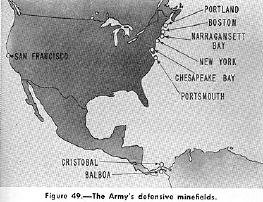
Map of Mined Harbors during World War II
There is no record of any enemy ship being damaged or sunk, or even detected, by any of these domestic minefields. After World War II, the responsibilities of harbor defense mining was assumed by the US Navy.
Fort Tilden's Mine Casemate:
Fort Tilden was the control point for the minefield defenses on the east side of the Ambrose Channel in New York Harbor, while Fort Hancock, at Sandy Hook, NJ, was the control point for the minefield defenses on the west side of the Ambrose Channel. Fort Wadsworth, at Staten Island, NY, controlled the mines inside the submarine net at the Narrows.
The controlled submarine mines planted in the New York harbor were connected by wires to their respective shore stations. From the mine casemate bunker, these mines would indicate when a ship or submarine contacted any mine and could then be fired individually or in groups.
What's left today?
The abandoned, overgrown, and empty mine casemate bunker still remains at Fort Tilden, but all equipment has long been removed.
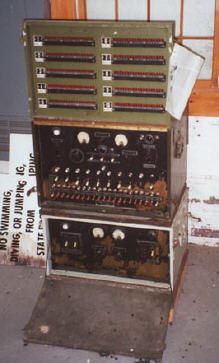
M4 Emergency Mine Control (Special thanks to Pete Payette!)
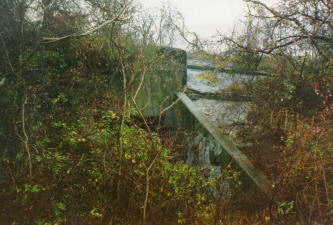
The Mine Casemate Bunker at Fort Tilden
(Private Collection, 1999)
If you have any additional historic information concerning Fort Tilden's mine casemate bunker and the controlled minefields of New York Harbor (especially any maps showing the minefield locations), please contact us.
Mines and Mine Casemate Equipment


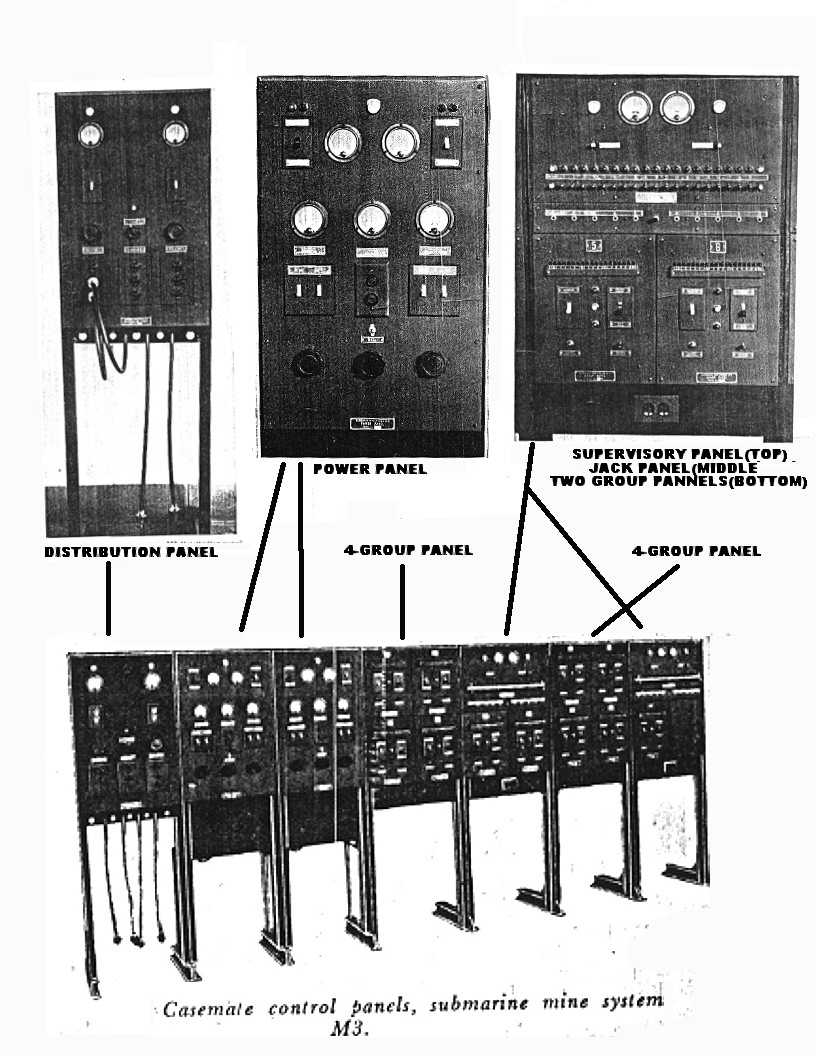
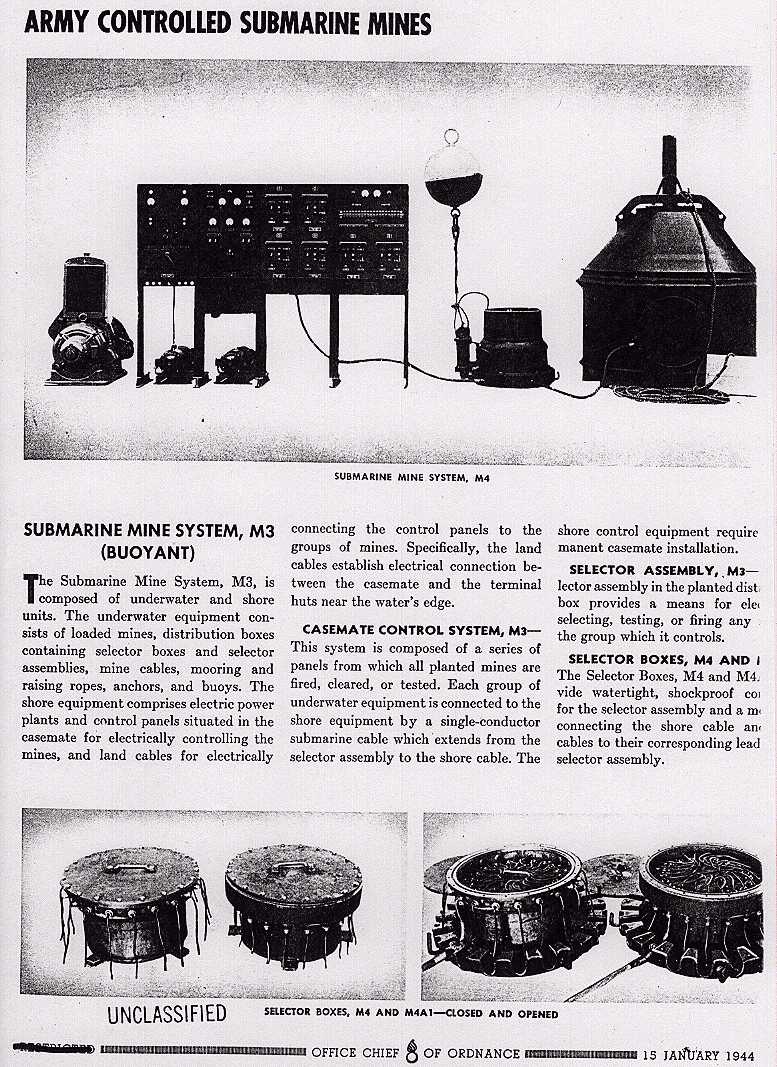

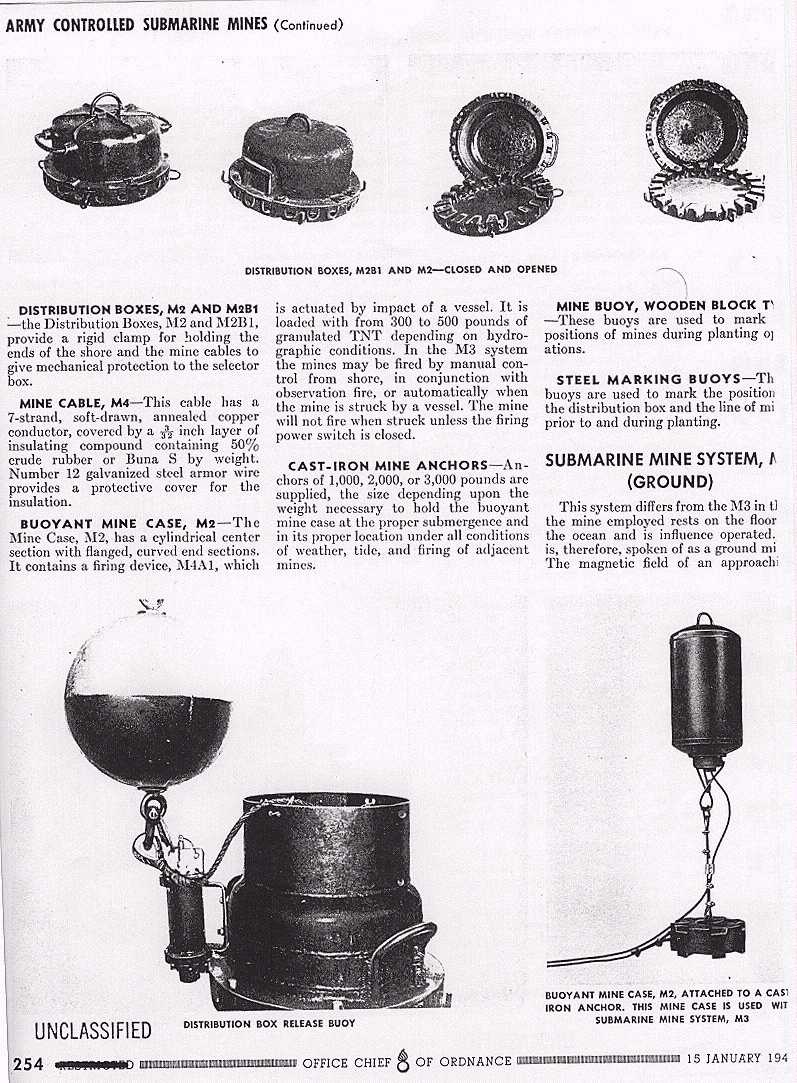
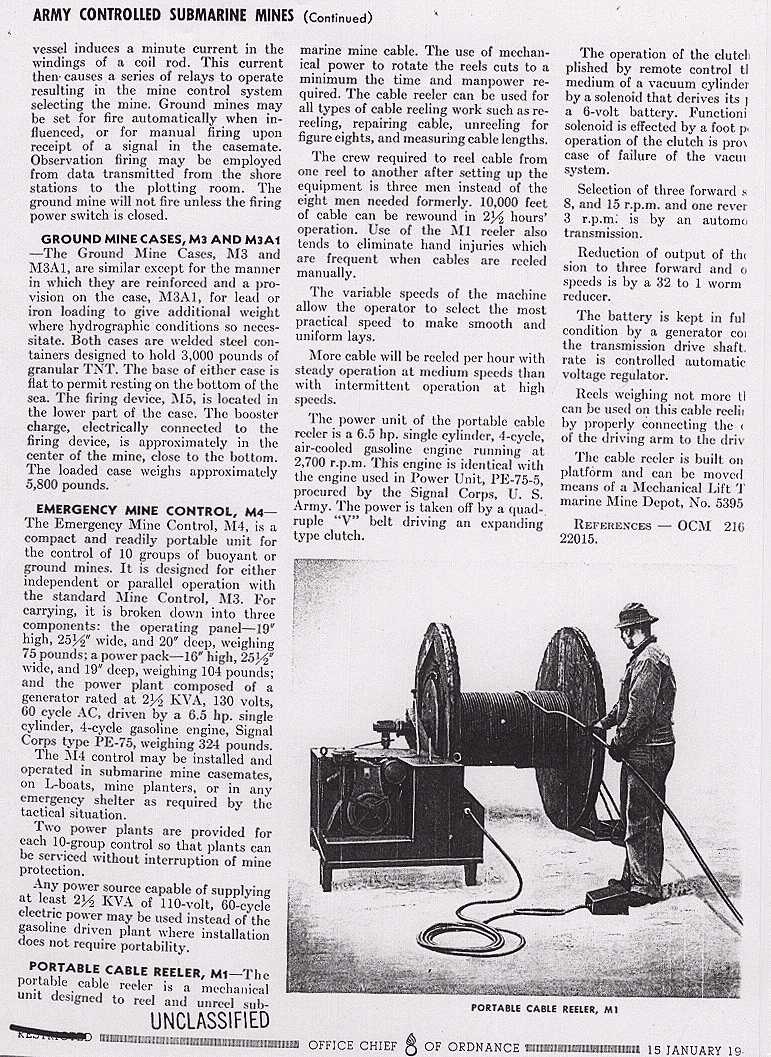
References and further reading:
America's Use of Sea Mines, Robert C. Duncan, January 1962,
USGPO.
Controlled Submarine Mines. Field Manual 4-6, 1 May 1942.












